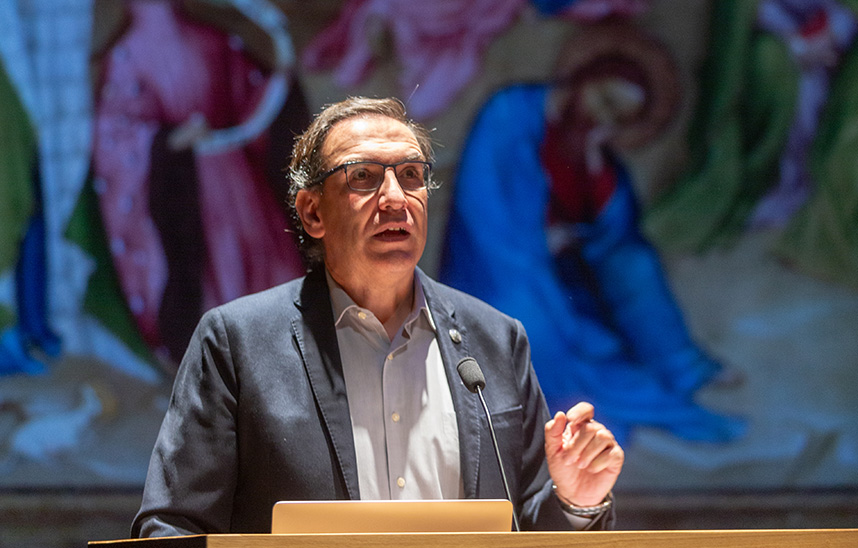Fernando Gutiérrez Baños: "The medieval world was embarrassed to represent the individual in three dimensions".
The Full Professor of the University of Valladolid gives the third lecture of the Prado Museum series at the University of Navarra.

PhotoManuelCastells/
"The Age average was always very reluctant to represent contemporary characters". This was stated by Fernando Gutiérrez Baños, Full Professor of Art History at the University of Valladolid, in the third session of the lecture series that the Friends of the Prado Museum Foundation organizes in partnership with the School of Philosophy and Letters of the University of Navarra. In his speech, the expert, who has been presented by Professor Clara Fernández Ladreda, has approached the attendees the most remarkable features of the portraits of kings and nobles in Gothic painting, the period on which focuses this VIII edition of the cycle Francisco Calvo Serraller.
"The faithful portrayal of people was lost even before the fall of the Roman Empire for an ideologicalreason," he explained. Before focusing on modern portraiture, according to Gutiérrez, one must first focus on the so-called "contextual representations." An example is the iconographic series, such as the successive paintings of kings and archbishops where "individuals are reflected. But here the important thing is not each one, but the idea of series." "This would point to the concept of succession," he said. On the other hand, in the retrospective representation, "a story is being told and a king appears as part of a story", while in the prospective there was another intention: "What is being transmitted is what they aspire to, to beatitude, the contemplation of truth".
The modern portrait, as he explained, consisted of presenting an individual being faithful to his features, without external factors to justify it. "It is enough to be him," he pointed out. With this, the lecturer has pointed out that it was the equivalent of the Instagram of the time. "It was important both for diplomatic use and for affective use, as we would do with the photo of someone dear to us." Also generated in medieval times are crypto-portraits, which introduced the image and features of a person in a status they had not witnessed, such as Ferdinand the Catholic in the crucifixion of the painter John of Flanders. "Despite the fact that El Prado's collection of medieval paintings is constrained, there is much to enjoy," he said. With this, he presented to the audience three emblematic works that are preserved: the Virgin of the church of Santa María de Tobed, the Virgin of the monastery of San Benito el Real de Valladolid and the Virgin of the convent of Santo Tomás de Ávila.
"Today, we are heirs of the Ancient World as the medieval, and the portrait has passed to the general public through photography," said the professor. Throughout history, Fernando Gutiérrez Baños defended that "what has changed are the techniques, the formats and the social classes that perpetuate the image of oneself". A constant that has been evident since Antiquity.
The last session will take place next Wednesday, February 14 and will be given by Javier Barón, Head of Conservation of 19th Century Painting at the Museo del Prado. Tickets can be purchased on the website or at locker of the Museo Universidad de Navarra.
